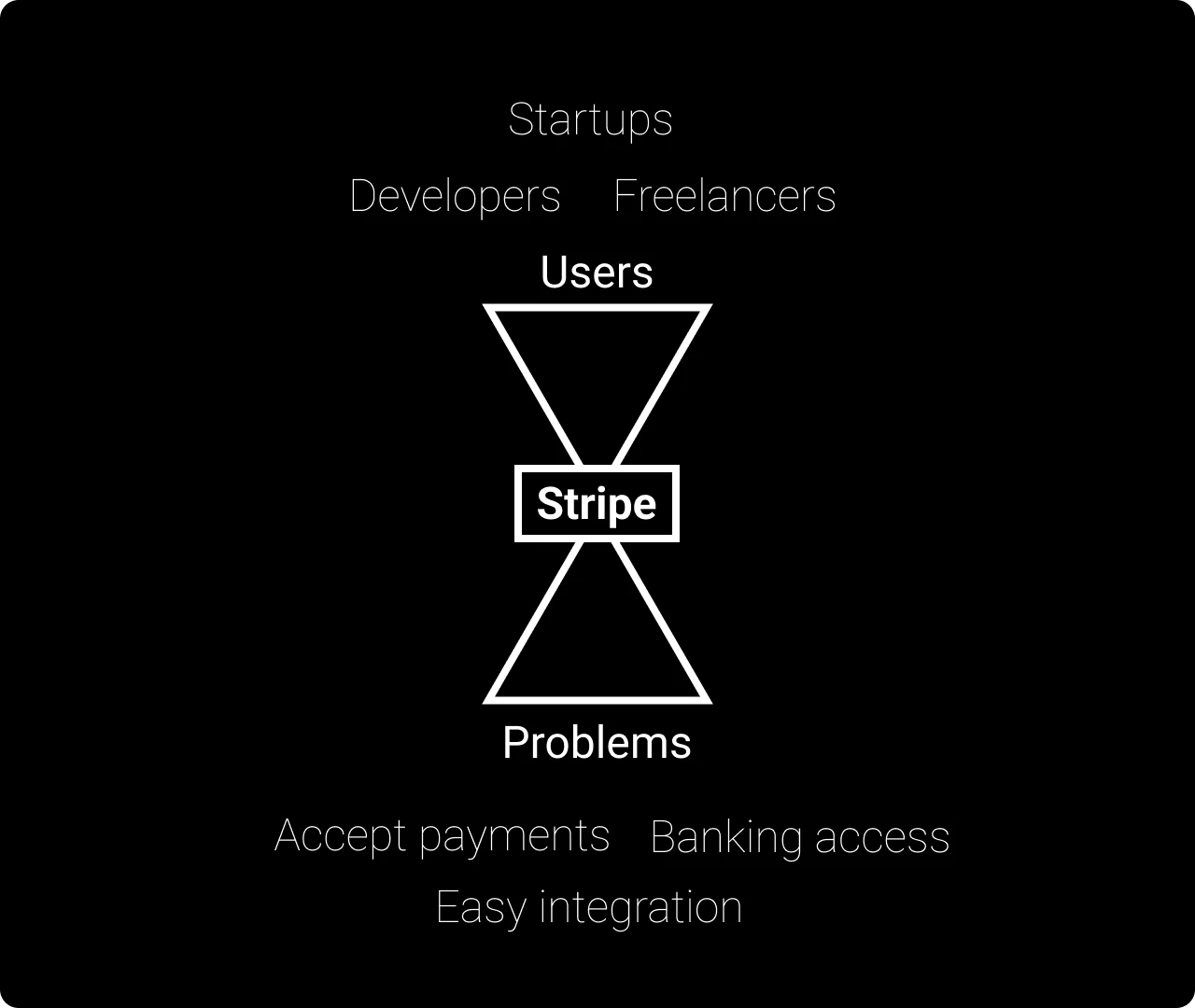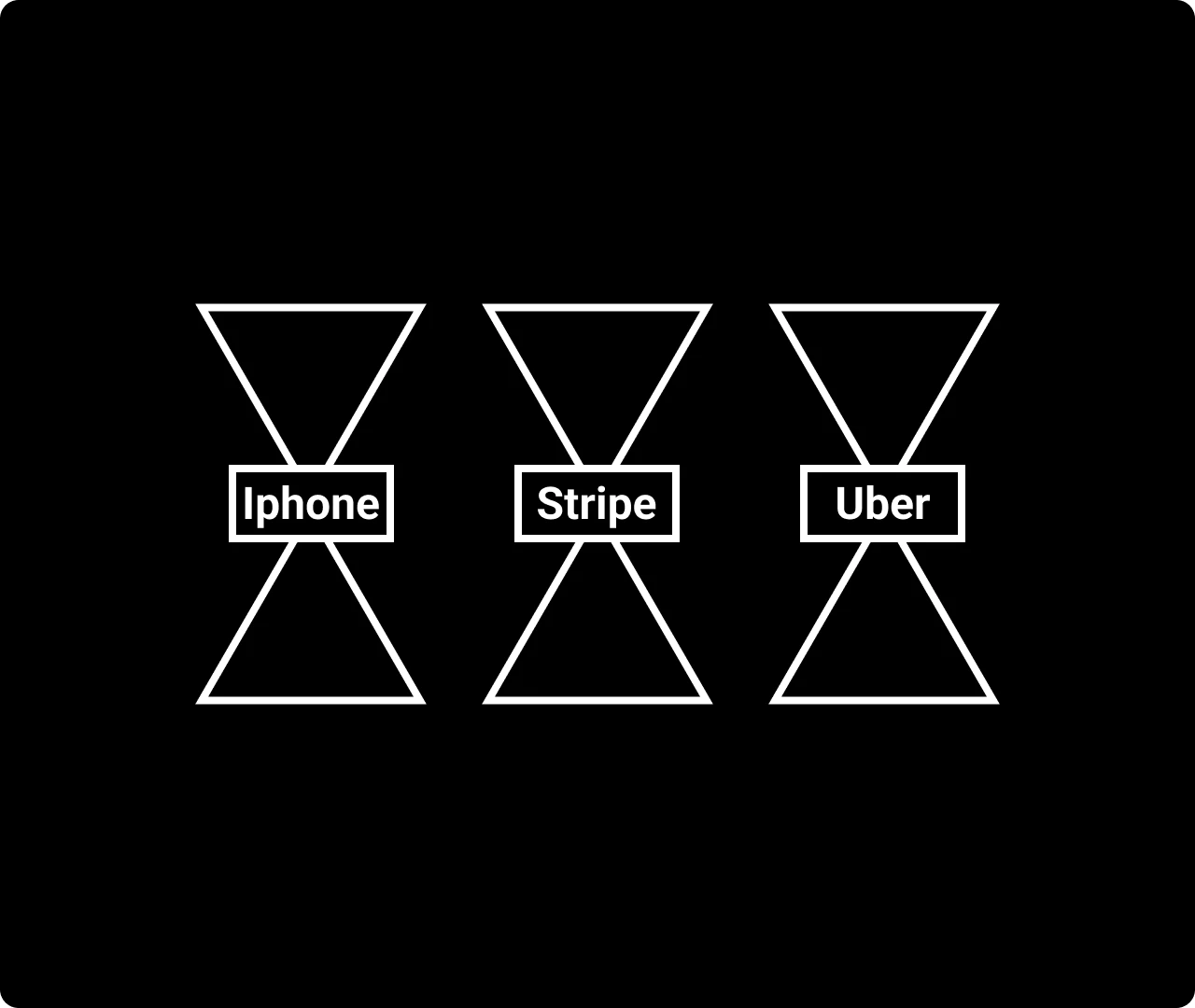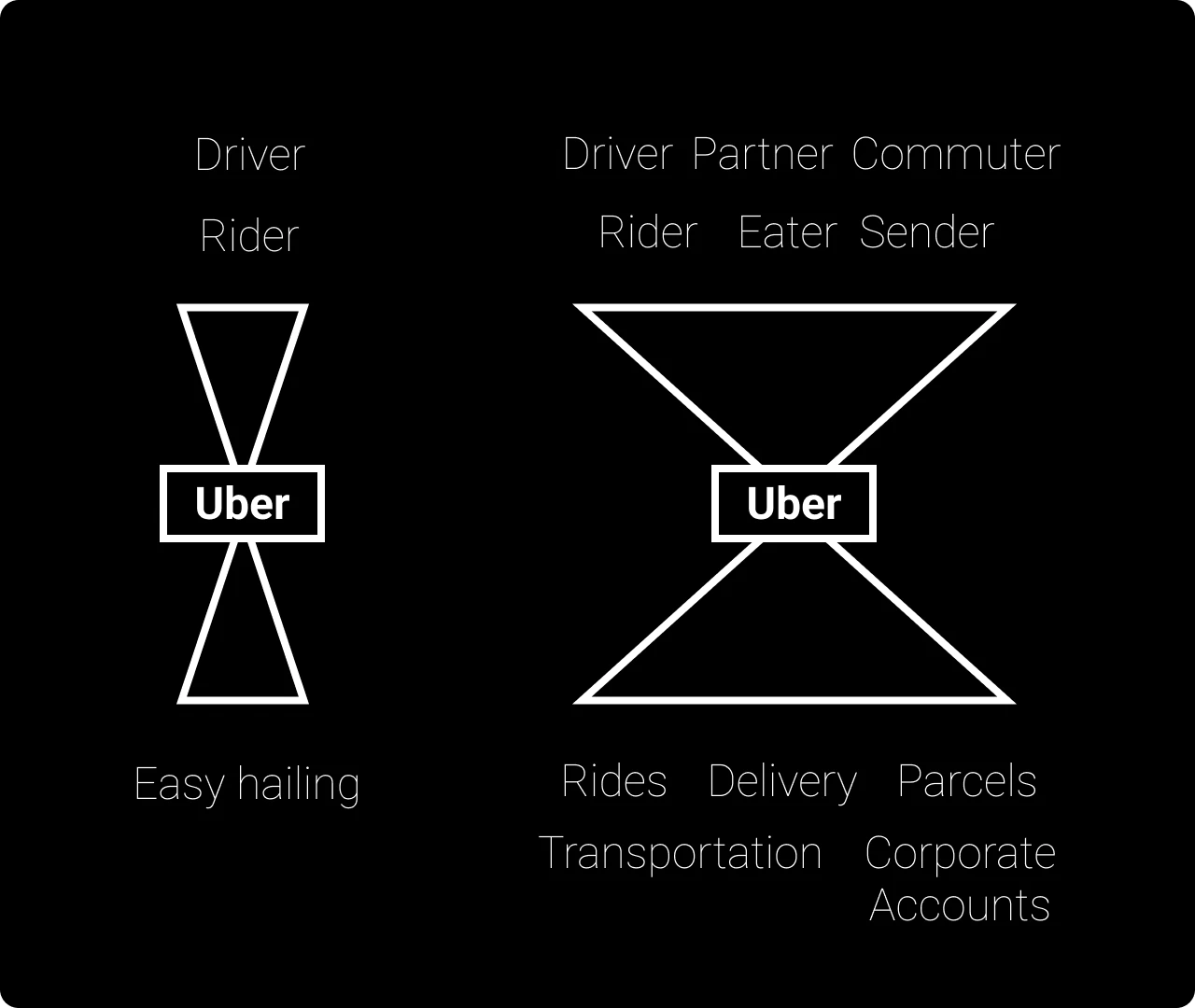Understanding the hourglass mental model
Nigel Lee discusses Stripe, Uber, and the iPhone to predict blockchain’s potential to disrupt business.
By Nigel Lee

Nigel Lee is Strategy and Operations Lead at Immutable. The following is his opinion and does not reflect the views or opinions of MoonPay.
Friends and old colleagues often ask me these days, “what’s up with your blockchain thing?” The undertone is skepticism and probing for hype.
Usually a few examples of practical use cases like royalties for creators, ownership of game items, and faster payment infrastructure relieves these doubts. Sometimes, if I explain it well, there's a sudden glimmer of inspiration in their eyes.

But I don’t think this does blockchain justice.
This piece tries to articulate why blockchain and all its derivatives present an immense opportunity to help both myself and others see the big picture more clearly.
Hourglass business models
Before diving into the blockchain business itself, it’s helpful to look at others that have come before it and there are many. This will sound a lot like Ben Thompson’s Aggregation Theory, but I want to make it more simple.
▽ People with problems; △ different problems solved; = one solution
If you look at products like the iPhone, Stripe, and Uber, they’ve been very successful. One way to try and understand what they did well is like an hourglass. At the top is the spectrum of user audiences they served, the bottom are all the problems they solved, and at the middle of it all, the sole bottleneck, is their product.

For example, the iPhone:
▽ Users who needed a phone, music, access to the internet, cameras, etc
= A mobile computer with a big touchscreen
△ Solved problems like communication, entertainment, productivity, etc
Stripe:
▽ Developers, startups, freelancers, e-commerce sites, subscription services
= A few lines of code
△ Easy integrations, accept payments, bank connections, legals, compliance

The best hourglasses get fatter
Stripe and Uber show this best.
Stripe is expanding to solve even more problems for its customers without having to ‘break’ the bottleneck. That is, customers don’t have to do much differently aside from flipping a switch or adding a few more lines of code. From just accepting credit card payments, Stripe now gives access to financing, cryptocurrency, issues virtual credit cards, and more.
Uber started with hailing a car. Now it’s also other types of cars, food, parcels, other modes of transportation, and solutions for business. Again, all in the same app.
The most successful hourglass businesses can easily attract more types of customers, solve more problems, and get fatter.

The best bottlenecks solve problems the best way
This one is about the competition. With a set of customers and a set of problems to solve, why did the iPhone, Stripe, and Uber end up winning? Who gives the most value to customers? You could call this the ‘X’ factor.
A model I like using is:
value = X * (problem1 + problem2 + problem3 + …)
Put in another way, the product that adds the most value is able to solve problems the best way for customers—the product with the highest valued ‘X’ factor.
If you want to make this a little bit more complicated:
value = X*problem1*w1 + Y*problem2*w2 + Z*problem3*w3 + …
The product that adds the most value knows which problem to solve well (the one with the highest weight i.e. w1, w2, w3) and has the best solution for each accordingly.
The blockchain biz is a work-in-progress hourglass
Whew! Now back to web3.
My argument for blockchain and why you should consider it is simple:
It’s currently a ‘slim’ hourglass with few customer types and problems solved
It’s an hourglass that may grow immensely fatter
The winner(s) are still to be defined

Bitcoin started with a simple solution of solving for the double-spend problem for an online currency through cryptography. Over the years, the likes of Ethereum expanded this problem set to become an app and computing layer. Blockchains now try to solve financial, social, and digital ownership issues.
As more people and funding pours into the industry, the problems blockchain solves will only get bigger (i.e. fatter). We already see projects for universal digital identity, composable social graphs, data sovereignty, creator economics, and more.
No one’s won yet! If you haven’t tried it for yourself, the solutions and user experience in blockchain suuccckkkksssssssss. What’s the right problem to solve and who will solve it best?
Time will tell.
Nigel Lee is Strategy and Operations Lead at Immutable






.png)